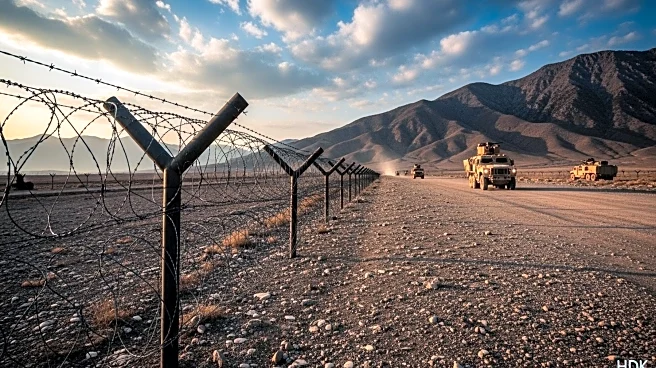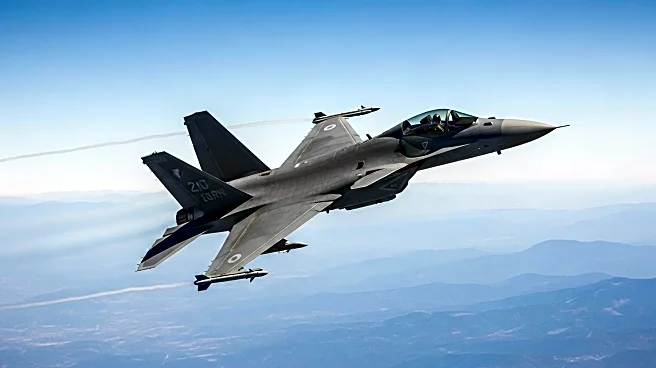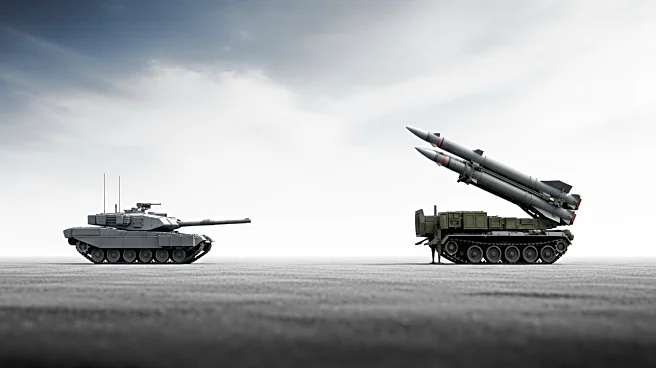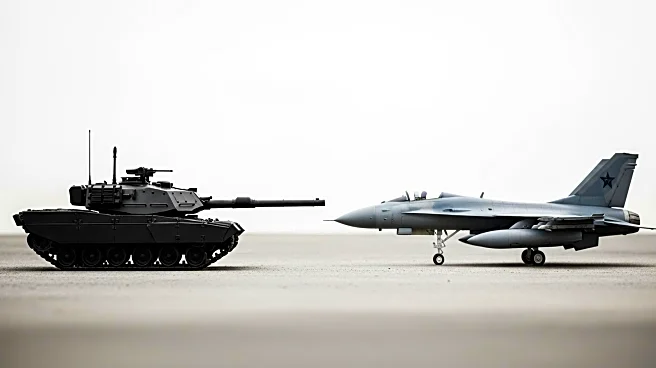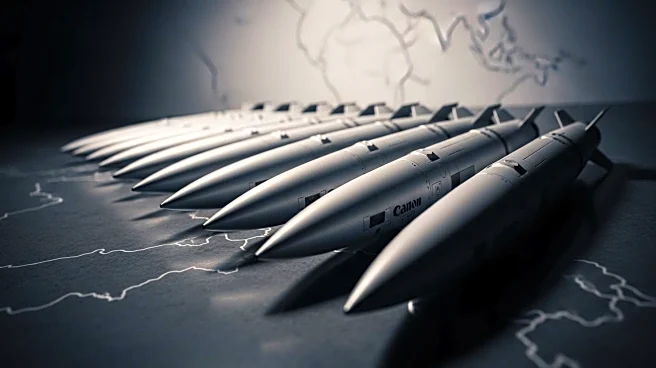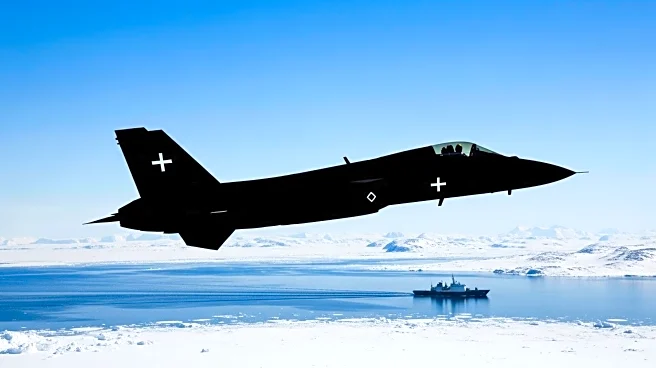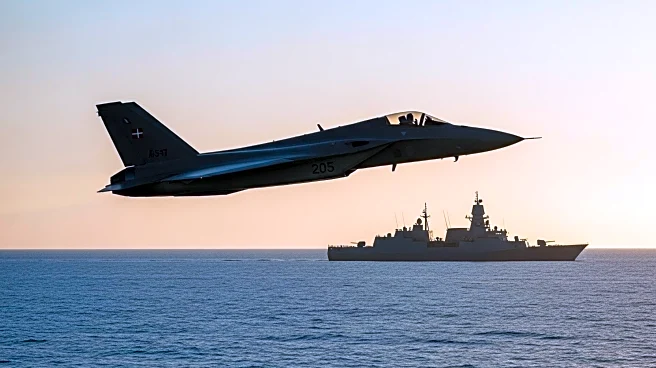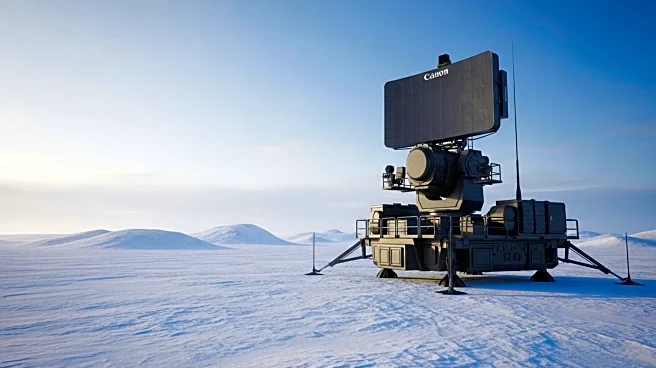What is the story about?
What's Happening?
The U.S. Army, in collaboration with NATO allies, is actively working to establish a new Eastern Flank Deterrence Line (EFDL) aimed at enhancing combat capabilities to counter potential Russian aggression. This initiative involves the integration of lethal and non-lethal capabilities through a newly formed Operational Fires Command. The effort includes the deployment of counter-drone systems, air defense coordination, and data-sharing mechanisms to ensure interoperability among NATO forces. The EFDL concept was first introduced at the Association of the U.S. Army’s LandEuro conference in Germany, with a focus on scalable, global deterrence. The U.S. Army's V Corps is participating in NATO exercises, such as Avenger Triad, to bring the EFDL closer to fruition.
Why It's Important?
The development of the Eastern Flank Deterrence Line is crucial in addressing the increasing number of airspace incursions over Eastern Europe and the proliferation of one-way attack drones used by Russia. By enhancing military-industrial interoperability and deploying advanced counter-drone systems, the U.S. and NATO aim to create a robust defense mechanism that can effectively deter Russian threats. This initiative not only strengthens the security of Eastern European countries but also contributes to global deterrence strategies, potentially impacting U.S. homeland defense capabilities. The focus on rapid deployment and cost-effective solutions highlights the urgency and strategic importance of this effort.
What's Next?
The U.S. Army and NATO are expected to continue expanding the capabilities of the Eastern Flank Deterrence Line, with plans to train additional partners such as Denmark and Romania. The integration of AI-driven systems like Palantir’s Maven Smart System will further streamline data usage and enhance coordination among NATO forces. The ongoing assessment of drone-on-drone intercept platforms and sensor integration will play a key role in refining detection and response strategies. The rapid fielding of these systems is anticipated to occur within the current calendar year, with each participating country expected to feature similar capabilities soon.
Beyond the Headlines
The establishment of the Eastern Flank Deterrence Line represents a significant shift in military strategy, emphasizing the use of unmanned systems and AI technology to address modern warfare challenges. This approach not only addresses immediate threats but also sets a precedent for future defense initiatives that prioritize technological innovation and international collaboration. The ethical implications of deploying AI-driven systems in combat scenarios and the potential for increased reliance on unmanned technologies are areas that warrant further exploration.
AI Generated Content
Do you find this article useful?
